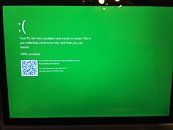
Nintendo Wii U Memory Failures Investigated by Homebrew Community, Hynix Chips in the Spotlight
The homebrew and modification community has delved deeper into the recent bout of bricked Nintendo Wii U consoles, unlucky owners are seeing their systems throwing up error codes that indicate an internal memory failure. As covered on TPU almost two weeks ago, it was speculated that leaving a Wii U in a long-term state of unuse was a root cause of the problem. It is now theorized that a simple choice of memory chip is the real issue behind the corruptions, and not a case of leaving your unplugged Wii U stashed in a box somewhere.
An online database has been established on hackmd.io, and a member is collecting hard data from Wii U owners across various online communities and sources. Early indications show that consoles fitted with a Hynix eMMC are leading the pack in terms of number of system failures, Samsung-equipped models are placed in a distant second place, and the Toshiba variant is reported as having zero problems.
An online database has been established on hackmd.io, and a member is collecting hard data from Wii U owners across various online communities and sources. Early indications show that consoles fitted with a Hynix eMMC are leading the pack in terms of number of system failures, Samsung-equipped models are placed in a distant second place, and the Toshiba variant is reported as having zero problems.










